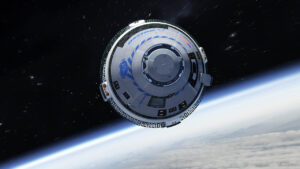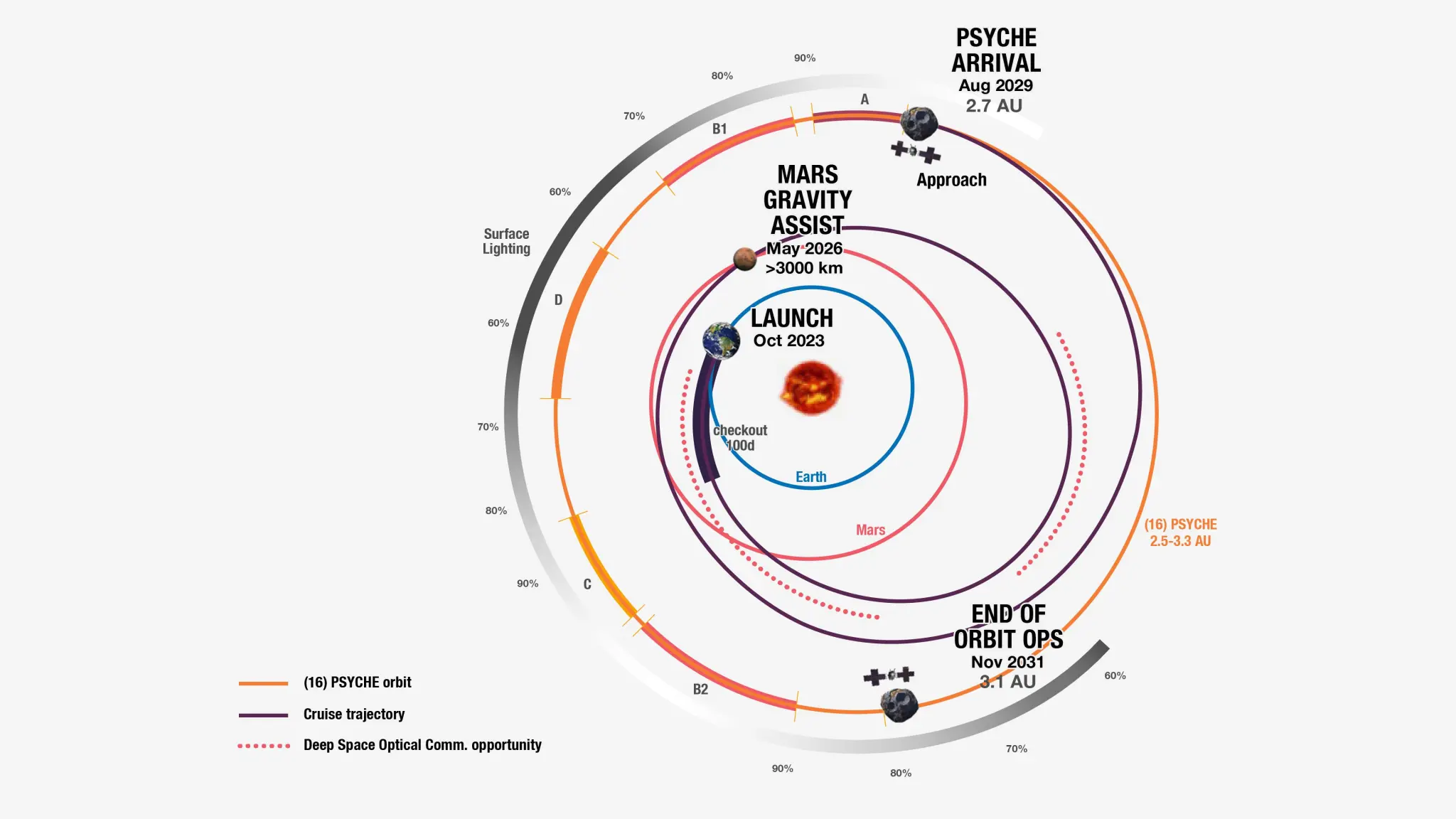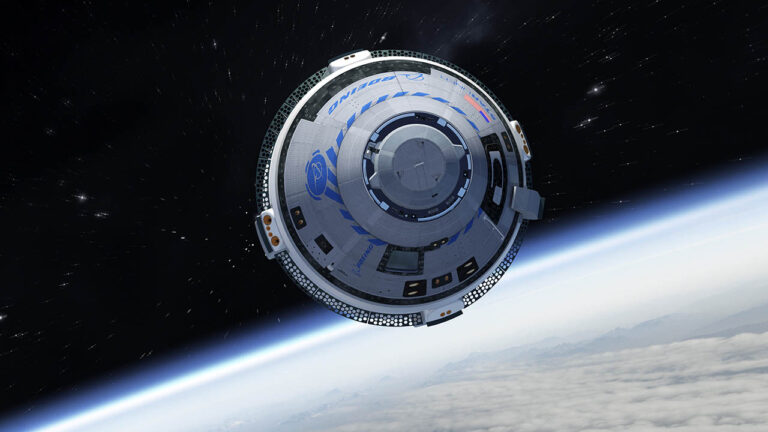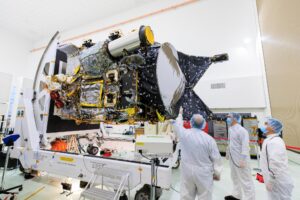Exploring Psyche: NASA’s Mission to an Intriguing Metal-Rich Asteroid
NASA’s Psyche spacecraft is gearing up for an exciting mission to explore a unique metal-rich asteroid nestled in the asteroid belt between Mars and Jupiter. As we delve into this extraordinary endeavor, let’s uncover the fascinating details of this interstellar journey.
A Brief Introduction to Psyche
Psyche is not just your average spacecraft; it’s a colossal endeavor that would easily cover a tennis court with its fully deployed solar arrays. Most of the critical components of Psyche, including its main computer, flight software, and fault-protection systems, hail from NASA’s Jet Propulsion Laboratory (JPL) in sunny Southern California.
One of the standout features of Psyche is the Deep Space Optical Communications (DSOC) experiment. This NASA innovation will test optical, or laser, communications beyond the Moon, marking a significant leap in our interplanetary communication capabilities.
A Mission Unlike Any Other
Psyche marks NASA’s pioneering mission to study an asteroid that boasts more metal than rock or ice. This metallic wonder is the namesake of the spacecraft itself and promises to unveil mysteries hidden within its shimmering surface.
The launch date for this exciting mission is set for October 12, 2023, at 10:16 a.m. EDT from Kennedy Space Center. Psyche will ride aboard a SpaceX Falcon Heavy rocket, representing the first in a series of NASA science missions to utilize this mighty launch vehicle.
Assuming all goes according to plan, Psyche’s gravity will gracefully capture the spacecraft in late July 2029, initiating its prime mission in August. Over the course of approximately two years, Psyche will gracefully orbit the asteroid, capturing images, mapping the surface, and collecting invaluable data to decipher its composition.
Meet the Psyche Spacecraft
The Psyche spacecraft boasts a body roughly the size of a small van, and it cruises through space powered by solar electric propulsion. It’s equipped with a suite of instruments, including a magnetometer, a gamma-ray and neutron spectrometer, and a multispectral imager, all designed to meticulously study asteroid Psyche.
What’s particularly exciting is that Psyche will begin beaming images back to Earth as soon as it locks onto the asteroid, offering us a firsthand look at this enigmatic world.
For more info on Psyche Aircraft, please visit https://runway101.com/nasa-psyche-spacecraft-engineering/
Unraveling Psyche’s Secrets
Scientists speculate that asteroid Psyche, stretching approximately 173 miles (280 kilometers) at its widest point, may represent the exposed core of a planetesimal—an ancient building block of planets. However, there’s an intriguing twist: Psyche could also be a remnant of an entirely different iron-rich celestial body, originating from the early days of our solar system.
Through its mission, Psyche aims to shed light on the formation of Earth’s core and the cores of other terrestrial planets. It’s a voyage into the very heart of planetary evolution.
Journey to the Center of the Asteroid
Watch the LIve Launch below:
Psyche’s voyage to its namesake asteroid is akin to a journey to the center of the Earth. If Psyche is indeed a planetesimal’s exposed core, it could offer unparalleled insights into the interior of terrestrial planets like Earth—something we can’t access directly.
The asteroid may have undergone dramatic transformations, shedding its outer layers during the tumultuous early days of our solar system.
Asteroid Psyche: A Unique Celestial Body
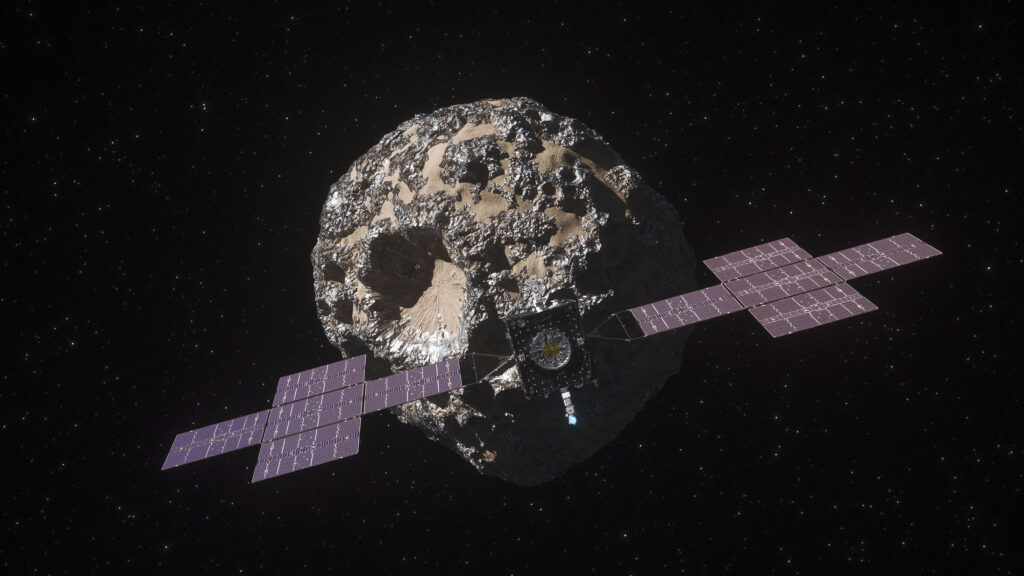
Asteroid Psyche, sometimes referred to as 16 Psyche due to its numerical order of discovery, orbits the Sun in the asteroid belt between Mars and Jupiter. It’s approximately three times farther from the Sun than Earth, resulting in varying distances ranging from less than 186 million miles to over 372 million miles.
Psyche’s shape is irregular, resembling a potato, with dimensions of 173 miles (280 kilometers) across at its widest point and 144 miles (232 kilometers) in length. Its surface area spans a substantial 64,000 square miles (165,800 square kilometers).
Despite its density of about 212 to 256 pounds per cubic foot (3,400 to 4,100 kilograms per cubic meter), Psyche’s surface gravity is considerably lower than both Earth and the Moon. Lifting a car on Psyche would feel more like lifting a large dog.
Scientists estimate that Psyche may consist of a significant mix of rock and metal, with metal accounting for 30% to 60% of its volume. These conclusions are drawn from radar observations and measurements of Psyche’s thermal inertia, which gauges its ability to absorb and radiate heat.
Awaiting Close Encounters
While data suggests variations in metal content and color across Psyche’s surface, we eagerly anticipate the moment Psyche captures the asteroid in its sights, allowing us to witness its true appearance for the first time.
In conclusion, NASA’s Psyche mission is an exhilarating exploration of an asteroid like no other. As we prepare for this interstellar odyssey,
we anticipate unlocking the secrets of our solar system’s past and gaining fresh perspectives on the origins of celestial bodies. Stay tuned for more updates as we venture further into the cosmos.
For more info visit https://science.nasa.gov/mission/psyche/
Photos: NASA
